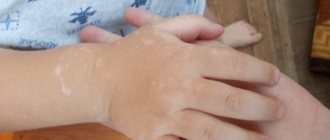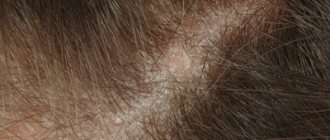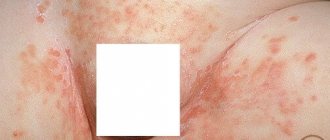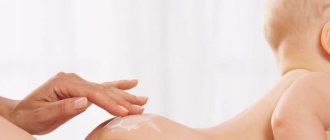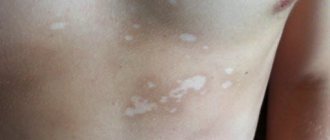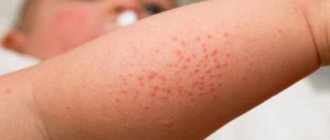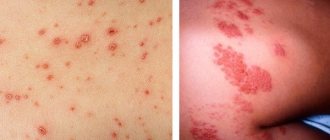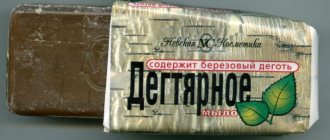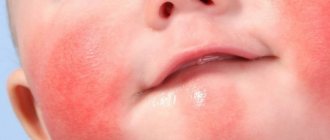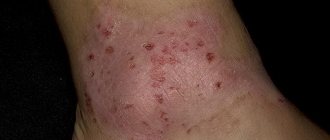Varicose dermatitis (venous) is a disease in which an inflammatory process develops in the skin above the veins. In this case, vascular function is either reduced or completely lost. The pathology progresses due to tissue trophism and circulatory disorders. Most often, varicose dermatitis affects the lower extremities (from the foot to the knee). In the vast majority of cases, the disease develops in older people, but it is possible that its symptoms will appear in a person at 30-40 years of age. When the first symptoms of varicose dermatitis appear, you should immediately contact a medical facility. If treatment is not carried out in a timely manner, complications may develop, including disability.
…
Varicose (venous) dermatitis is chronic and, once it occurs, requires constant attention to the skin of the lower extremities. Inattention to this problem can be complicated by the appearance of trophic ulcers, the treatment of which is a very labor-intensive process. Therefore, in some cases, even before such complications arise, surgical intervention is necessary.
Causes
The main cause is varicose veins of the lower extremities. The following can also lead to the development of varicose dermatitis:
- thrombosis (venous) of blood vessels;
- injury to the lower extremities, which is accompanied by damage to the veins;
- obesity;
- improper use of medications;
- bad habits;
- pregnancy;
- childbirth;
- a history of diseases such as: thyroid disease, pathology of the cardiovascular system, a strong increase in cholesterol levels;
- long, constant position in one position (sitting or standing).
Prevention methods
You can prevent stagnant dermatitis if you start treating varicose veins in time. Doctors also recommend:
- Allow your legs to rest during the day from the position in which they are forced to spend more time: with a sedentary lifestyle, get up and walk more often, while “standing work”, find the opportunity to take a horizontal position and raise your lower limbs.
- Avoid the cross-legged position when sitting.
- During the day, try to change the height of the sole of your shoes. Not only high heels, but also flat shoes are considered dangerous.
- Do not wear clothes that are too tight in the groin. It compresses large veins, thereby causing a deterioration in blood flow.
- Walk barefoot more, choose a relief surface (grass, pebbles) for walking.
- Prevent constipation. They are the main reason for the formation of high pressure in the blood vessels located in the pelvis.
Proper nutrition plays an important role in preventing disease. Doctors advise their patients to be sure to reduce their consumption of baked goods, flour products, and fatty foods. They contribute to weight gain, which puts unnecessary strain on the lower limbs. It is one of the main provoking factors for varicose veins. If you have problems with your veins, you should not eat rich soups, jellied meat, or marinades. They provoke dilation of the walls of blood vessels. Alcohol and coffee draw moisture out of cells. It is useful to include fresh vegetables and fruits, whole grain cereals and bran, seafood and lamb kidneys, eggs, butter, wheat, and liver in your diet. They contain a lot of fiber, healthy vitamins, minerals, elements, the absorption of which helps strengthen the vascular walls.
It is useful to learn a set of physical exercises with which you can relieve tension from your legs, increase blood flow and improve your general condition.
Stages
Varicose dermatitis develops in several stages.
Stage 1 : the initial stage of the formation of the disease. In this case, it is observed: the skin becomes swollen, acquires a purple (reddish) color, and peeling appears. The patient begins to feel discomfort in the form of itching.
If all these signs are ignored, the disease begins to progress and enters the second stage of development.
Stage 2 : at this stage there is well-defined swelling, and areas of peeling are clearly visible. The patient begins to feel severe pain and itching.
Stage 3 : This stage is characterized by the appearance of small blisters containing a clear liquid, while the skin acquires a brown tint. When scratching, the blisters burst, which leads to increased itching, the formation of ulcers, and the appearance of wet areas.
If treatment is not started, then all this leads to the formation of purulent ulcers and the risk of infection (and this leads to secondary infection).
Symptoms
Initially, what you need to pay attention to is the appearance of spider veins. Since the onset of the disease is little expressed. As the disease develops, you begin to feel:
- minor discomfort in the form of itching;
- the skin becomes bright red;
- the skin becomes shiny and smooth to the touch;
- decrease in temperature;
- compaction in areas of redness of the skin.
If you do not start treatment, the disease progresses and you can already observe:
- constant itching (intensifies at night);
- the skin becomes dark red;
- a blistering rash forms;
- upon palpation, nodules under the skin are felt.
Varicose dermatitis of the lower extremities
Diagnostics
It is necessary to consult a doctor, who will initially take a detailed history and examine the affected leg. When collecting anamnesis, it is necessary to answer correctly, carefully paying attention to questions such as:
- heredity;
- presence of chronic diseases;
- working conditions;
- Lifestyle;
- bad habits.
Then the doctor prescribes tests for you (depending on the stage of the disease):
- general blood analysis;
- general urine analysis;
- blood test for sugar levels;
- blood for bacterial culture;
- angiography;
- Dopplerography of the vessels of the lower extremities.
Treatment
The goal of treatment for varicose dermatitis is:
- in relieving swelling;
- restoration of venous outflow;
- preventing the appearance of cracks in the skin;
- preventing re-infection;
- preventing suppuration.
Treatment at stage 1: ointments, tablets
Initially, it is necessary to improve blood flow and increase the tone of muscle cells directly in the venous vessels. For this, the doctor may prescribe: “Phlebodia”, “Venarus”.
This stage is also characterized by the elimination of venous stagnation. For this purpose, compression garments are prescribed. For this purpose the following can be used: stockings, tights, bandages. Underwear helps the veins perform their function directly. To choose the right compression clothing, you need to consult a doctor. Based on the diagnosis, it is the doctor who will tell you what underwear you need to purchase. Properly selected underwear helps reduce swelling, reduce the risk of blood clots, and reduce leg fatigue.
Also, one of the goals of drug therapy at stage 1 is to eliminate itching. For this purpose, antihistamines are prescribed - Zodak, Diazolin, Cetrin.
To prevent cracks, creams with a moisturizing effect are prescribed. These include: Seni Care, Skin-Cap. If bubbles are already beginning to form on the skin of the legs, then a special mash is needed.
All this treatment helps eliminate symptoms such as itching, reduces the inflammatory process, eliminates swelling, and prevents secondary infection.
Stage 2 treatment: ointments, tablets
The second stage is quite similar in the nature of its treatment. In addition to antihistamines, treatment with hormonal agents is added. This is how hormonal ointments are prescribed: Sinaflan, Lokoid.
If there is suppuration on the skin, the doctor prescribes combination drugs that have antiseptic properties. These include: Triderm, Pimafucort.
Often the patient needs sedatives: valerian, motherwort.
Stage 3 treatment
As a rule, at stage 3, trophic ulcers already form. For their treatment, surgical intervention is prescribed. But before the operation, the patient must be prescribed preparatory therapy, which includes:
- adherence to strict bed rest, in which the body position is fixed with slightly elevated limbs (or limbs) to improve the outflow of lymph and blood;
- IVs are prescribed that help improve vascular patency;
- the sores are washed;
- mandatory wearing of compression garments;
- blood sugar control;
- Antihistamines are prescribed.
May be of interest:
|
Physiotherapy
The physiotherapy office is ready to offer such patients several procedures at once that will help eliminate venous dermatitis. The appointment should be made by a physiotherapist or phlebologist, taking into account the stage of development of the disease and the nature of the manifestation of the pathology. The most popular procedures are:
- Carrying out electrophoresis and pulsed magnetic therapy using eddy currents.
- Carrying out darsonvalization and intermittent pneumocompression.
- Performing balneotherapy, magnetic and laser simultaneous effects.
- The use of hydrotherapy, oxygen baths and ultraviolet irradiation.
- Conducting ozone therapy and phototherapy.
Treatment methods
- Compression garments are the basis of treatment. This therapy allows you to adjust the proper functioning of the blood circulation of the vessels of the lower extremities. But to achieve the effect, the underwear must be selected by a doctor. Compression garments: tights, stockings, bandages.
- Surgical treatment is prescribed for people who have already formed trophic ulcers. Also for those individuals for whom therapeutic treatment has not brought results. The goal of surgery is to remove non-functioning veins.
- Vacuum therapy is the basis of the technique of negative pressure, which helps normalize blood circulation, activates metabolism, and reduces inflammatory processes.
- Hirudotherapy - the basis of the technique is treatment using leeches. Leech saliva has anti-inflammatory, bactericidal, and analgesic properties. Helps prevent blood clots and improves lymphatic drainage.
- Physiotherapeutic treatment - for the treatment of varicose dermatitis, procedures such as darsonvalization, ozone therapy, electrophoresis, oxygen baths, balneotherapy are prescribed.
- Physiotherapy exercises are a set of special exercises prescribed by a physical therapy instructor.
Possible complications
A common complication of varicose dermatitis is infection and blood poisoning. This occurs due to constant scratching of the affected area. At the first stage, such complications are not observed, but with the formation of trophic ulcers, the risk of developing infection increases.
The wound surface is constantly in contact with clothing, hands, and hygiene products. Healing becomes slow and pathogens penetrate the ulcer. Sometimes patients with venous dermatitis are diagnosed with erysipelas. The pathogen quickly multiplies on a wet surface.
With a long course of pathology and lack of therapy, the ulcers become deep, affecting not only the skin, but also muscle fibers. When the wound cavity is thoroughly cleaned, bone tissue can be seen.
Drug treatment
Venotonics (strengthen blood vessels, remove swelling, relieve pain):
- for oral administration: Venarus, Phlebodia;
- for external use: Venozol, Troxevasin.
Heparin-based ointments (eliminate the inflammatory process, restore blood flow, eliminate stagnation):
- Hepatrombin;
- Venobene;
- Heparin ointment.
Moisturizers (to prevent cracks):
- Voltaren;
- Diclofenac.
Hormonal ointments (relieve inflammation, eliminate itching, flaking):
- Fluorocort;
- Advantan;
- Celestoderm.
Antiexudative (wound healing):
- Bepanten;
- Solcoseryl;
- Naftaderm.
Antihistamines, sedatives and broad-spectrum antibiotics are also used.
When taking medications, be sure to consult your doctor.
Use of medicinal ointments
Ointments with an anti-inflammatory effect that are used in the treatment of venous dermatitis include Diclofenac and Voltaren. In addition, ointments containing hormones can be used. If varicose dermatitis is acute, hormonal treatment may be prescribed. The most effective ointments are considered to be products such as Flucinara, Lorinden and Advantana.
Ointments for the treatment of venous dermatitis on the legs of a wound healing nature include “Solcoseryl” and “Bipanten”. If there are ulcers, the patient may be prescribed Argosulfan or Dermazin ointment. Hormonal ointments with the most effective effect of use include the following medications:
- The drug "Prednisolone" is an analogue of cortisone. Its main task is to relieve itching and redness. Due to the hormone content, the use of this medicine is possible for no longer than fourteen calendar days. After completing the treatment course, you should stop using the ointment for three weeks. A repeat appointment is then possible. Adverse reactions include cycle disruption in women along with weight gain.
- Soderm ointment for the treatment of venous dermatitis contains corticosteroids. The main effect of use is to relieve itching and pain in the legs. The use of this product is allowed no more than three times a week. Parallel use with other drugs is strictly prohibited. Adverse reactions in this case are allergies and disorders of the kidneys.
- Advantan ointment must be squeezed onto the affected area of the skin and rubbed thoroughly. This ointment should be used no more than four times a week. This remedy has a healing property, and the affected skin is very quickly replaced by a healthy area when using this medicine.
Thus, there are currently quite a lot of ways to treat pathology. It is worth noting that any home methods should not be used separately, but as part of a comprehensive treatment.
We looked at the symptoms and treatment of venous dermatitis in adults on the legs. Photos of people with this disease were presented.
Folk remedies
Chestnut
The fruits are poured with vodka at the rate of 50 grams of raw material per 500 ml of vodka. Leave to infuse in a cool, dark place for 1 week. It is necessary to take 2 times a day, 10 drops. Learn more about chestnut treatment for varicose veins.
Cabbage leaf
Beat the cabbage leaf and apply it to the sore spot, fix it and leave it for 1-2 days. Then you change, the course is 2 weeks.
Garlic and honey
Mix crushed garlic with honey, at the rate of 350 grams of honey per 250 grams of garlic. Let it brew for 1 week. Take 3 times a day, 1 teaspoon before meals. Course of treatment: 1.5-2 months.
Aloe
Take an aloe leaf and cut it in the middle. Apply the soft part and fix it overnight. Course: 2 weeks.
Potato
Grate the potatoes, transfer the resulting mass to gauze and apply a compress to the affected area. The duration of wearing the compress is 4 hours, 2 times a day for a course of 2 weeks.
